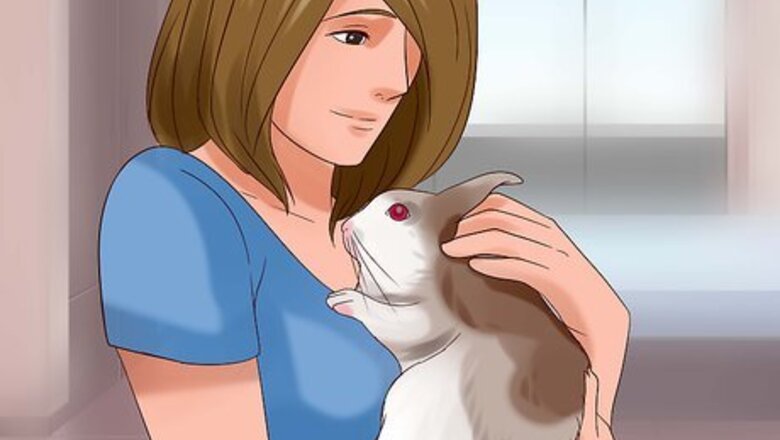
views
Choosing Toys for Your Rabbit

Get to know your rabbit. A rabbit's personality determines what toys they'll like and dislike. Before you start gathering toys for your rabbit, try to get to know him and figure out his preferences. Knowing what stimuli he responds to can help you plan playtime. At first, allow your rabbit to leave his cage/pen on his own and come to you. Let him explore a rabbit safe area. Pay attention to what he interacts with, and how. Some rabbits are shredders, meaning they like to tear apart paper and tissues in play. Some like to toss toys with their teeth and chase after them. Some enjoy knocking things over. Pay attention to your rabbit's behavior and see what kind of games he likes to indulge in. Rabbits are easily scared, so try to avoid making any sudden movements. Never yell at a rabbit, as this will encourage your rabbit to stay away from you.
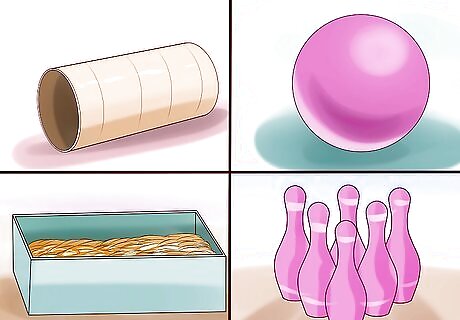
Pick toys for when you're home. Choose a variety of toys you can use to play with your rabbit at home. Base your selection off your rabbit's specific personality. For a rabbit who enjoys throwing, you can buy rabbit safe toys at a local pet store or department store. Bird toys also work well for this kind of play, as they're made to be easy to grip. If you're on a budget, you can use cardboard tubes from paper towel or toilet paper to save money. Rabbits who like to chew and dig can funnel this behavior into play. Straw mats and boxes full of shredded or scrap paper can provide hours of entertainment. Plastic baby toys and plastic balls are also great, as they're sturdy and will withstand a lot of play before they need replacing. Logic toys are great for curious rabbits, and can be found at pet stores. These toys generally involve a plastic or cardboard box that contains an enticing item, like a rubber ball or a treat. The rabbit must figure out how to open the box in order to get his reward. As some rabbits love pushing things over, consider investing in children's bowling pins. Rabbits will love knocking them over and then having you reposition them.

Pick toys for when you're away. While playing with your rabbit is great fun, you need to make sure your bunny is entertained even when you're not present. This way, rabbits won't develop undue stress while you're out and act out via biting, chewing, or being otherwise destructive. Many rabbit owners recommend building a cardboard castle for their rabbits. That means gathering old cardboard boxes and stacking them together and then cutting out holes for passageways and entrances. Rabbits who are chewers or curious rabbits particularly enjoy the cardboard castle. If you keep your rabbit in a room rather than a cage when you're away, or if you have a pen for your rabbit, this might be a good option. If your rabbit is confined to a cage during the day, this might be difficult. If your rabbit digs, provide plenty of sawdust or straw in his cage while you're away. If he gets bored, he'll be able to burrow.
Playing with Your Rabbit
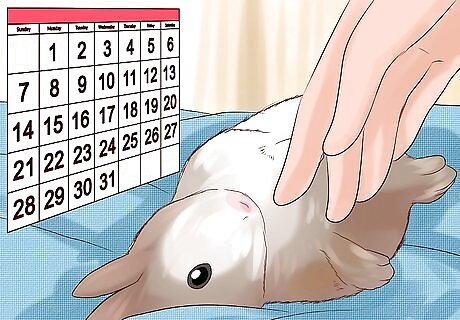
Schedule regular play periods. Rabbits tend to thrive on routine. The best way to encourage your rabbit to play with you is to have regularly scheduled playdates. Rabbits are generally the most active early in the morning, so this might be a good time to play with them if you're able. If not, a lot of rabbits are also active towards nighttime. Be careful when initiating playtime. Rabbits prefer to be left alone when eating, using the litter box, grooming themselves, and sleeping. If you notice your rabbit engaging in these behaviors, let him finish before initiating play. However, it's a good idea to open your rabbit's cage or pen while he's engaging in these behaviors as this signals to him that it's time to play and he can leave the cage when he's ready.
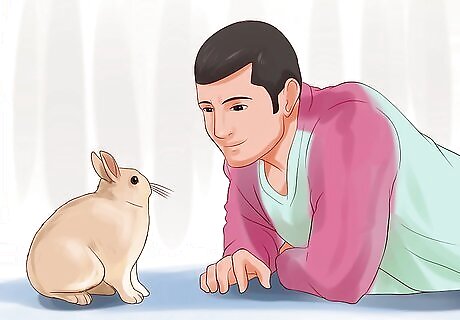
Get down on the rabbit's level. You want to make sure your rabbit feels safe and comfortable with you as a playmate. You should make sure they don't perceive you as a giant. Try to get down on the rabbit's level. You can sit, crouch, or lie down on the floor. Allow the rabbit the option of sitting on your lap or interacting with you physically. Some rabbits are cuddly and become "lap rabbits" with time, but most prefer independence during playtime.
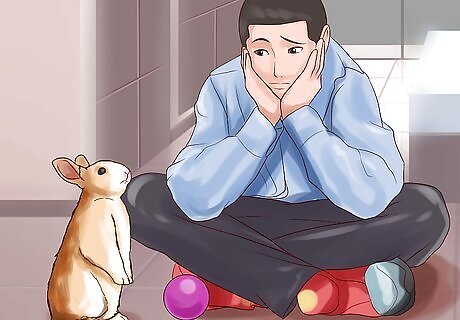
Be patient. Rabbits can be timid, especially at first. You should not push playtime or certain toys if your rabbit seems uninterested. Let the rabbit adjust at his own pace. Do not engage in rough house with a rabbit the way you would with a cat or dog. Rabbits are naturally timid and this could easily result in your rabbit feeling frightened around you. Greet your rabbit cheerfully before you open his cage, saying his name and something friendly like, "Good morning." This way, she will associate you with pleasantness and be more likely to want to interact. Pet your rabbit while giving him other positive feedback, such as friendly verbal cues or treats. You want him to associate your touch with safety and happiness.
Teaching Non-aggressive Play
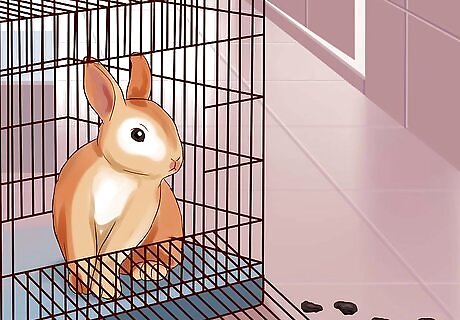
Use treats to lure your rabbit. Rabbits might be nervous when they begin playing, which can lead to aggressive behaviors. To keep your rabbit happy, try using treats as a means to lure him out of the cage. Many pet store rabbit treats are high calorie and not great for a rabbit's longterm health. Opt for healthy snacks instead, such as raisins, small pieces of apples, pineapple, celery, strawberry, and shredded wheat with no frosting. While treats are a great start, do not overfeed your rabbit. Allow your rabbit to have a few snacks when he enters the play area, but do not indulge him with treats every time he asks.
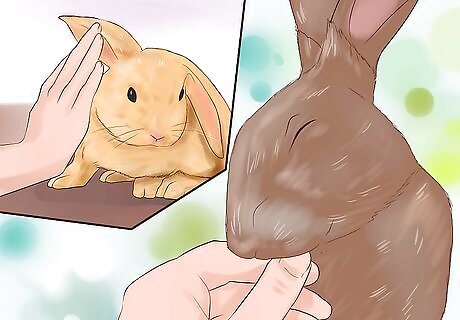
Deal with biting. Rabbits do sometimes bite. It's not always an overt act of aggression. Sometimes it's a response to stress or an attempt at affection, but the behavior is a problem for owners. Do not scold a rabbit. As rabbits are naturally timid, scolding does more harm than good in terms of discouraging biting. When a rabbit bites, gently push him away. Say something nice to him and pet him afterwards. Repeat this behavior as needed until a rabbit no longer acts out by biting.
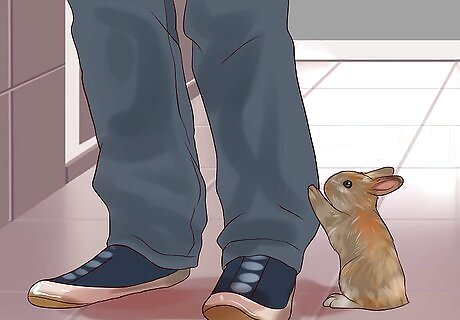
Allow your rabbit to decide when playtime ends. Rabbits are independent animals, and you need to respect this. Let them make decisions about playtime. Rabbits will signal when they're ready to play. They will circle their owners feet or tug at sleeves and pant legs. Wait for your rabbit to signal he's ready to play before bringing out the toys. When your rabbit loses interest in a game, and tries to return to his cage, let him. Rabbits often want to be alone and they'll resist playtime if it becomes something that feels forced. If a rabbit is engaged in another task, let him finish before trying to get him to play. Rabbits do not always want to play for the same amount of time. Some days, your rabbit might want to play for an hour and other days only 10 minutes. Do not push your rabbit to play more or less than he wants.
















Comments
0 comment